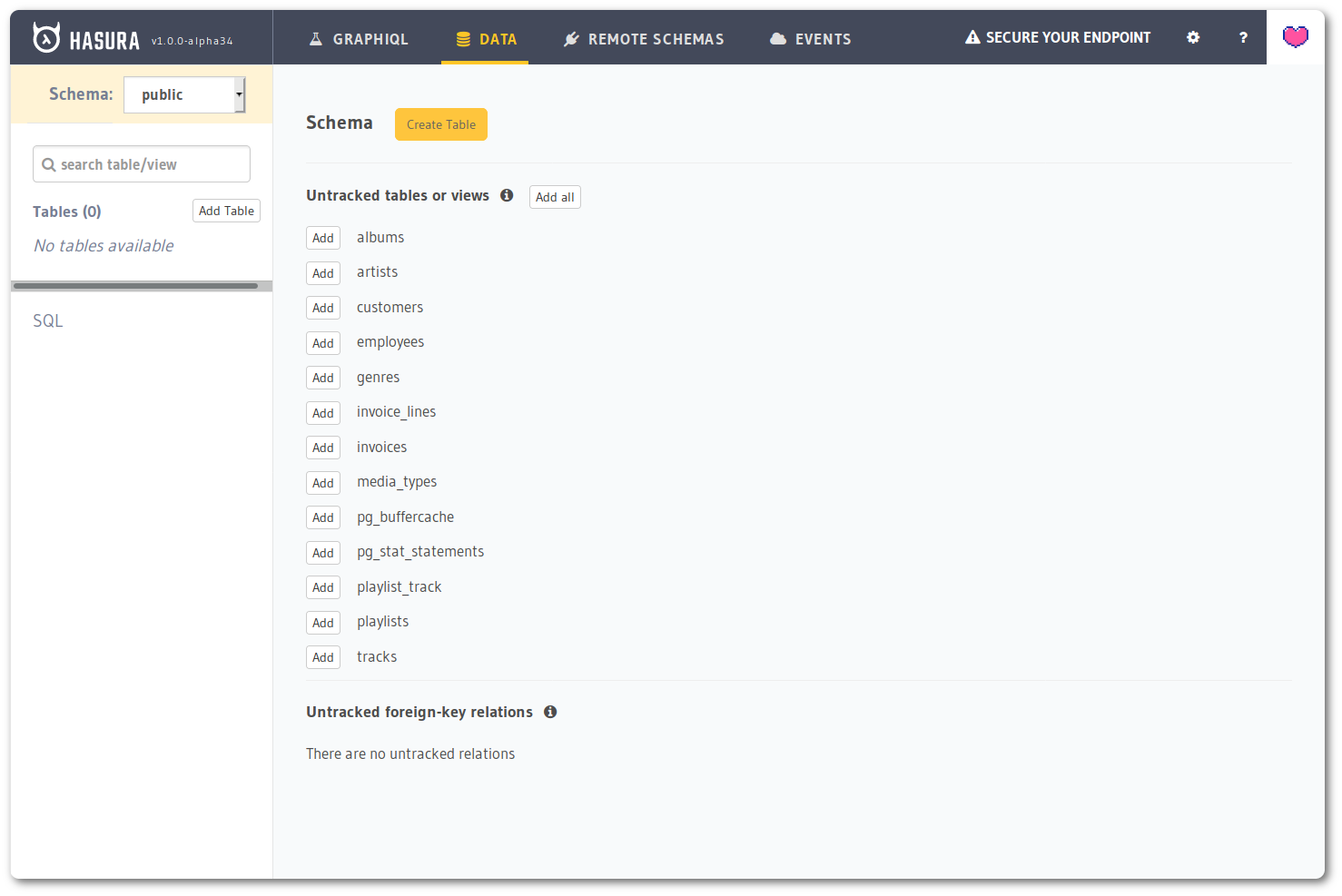graphql-engine
Hasura GraphQL Engine on Azure
This manifest is about using Hasura with an existing database. If you’re looking for a manifest that provisions a new Postgres server also, checkout ../azure-container-with-pg directory.
Click the button below to create a Hasura GraphQL Engine container on Azure Container Instances backed by an existing Postgres server (e.g. Azure Database for PostgreSQL). For a more detailed step-by-step guide on deplopying individual resources to Azure using the CLI, refer to the documentation.
(The button opens Azure Portal, you might want to do a Ctrl+Click, to get it on a new tab)
Pre-requisites
- A valid Azure Subscription (click here for a free trial).
- An existing PostgreSQL database.
Instructions
Once you click the button, it will take you to the Azure Portal, where you might be prompted to login first.
A custom deployment screen will show up - enter the following information, as shown in the screenshot that follows:
- Subscription: choose an Azure subscription.
- Resource Group: choose an existing one or create a new one.
- Location: choose a location for the resource group (note: Azure Container Instances and Database for PostgreSQL may not be available in all locations. Click here to check availability.)
- Name: enter a unique name for the deployment, this name is used for provisioning a DNS label for the container, so it needs to be globally unique.
- Postgres Host (Server Name): enter the Postgres server name, obtained from Azure Portal or otherwise. Typically, it would look like pg-server.postgres.database.azure.com.
- Postgres Port: choose the PostgreSQL port, default is 5432.
- Postgres Username (Server Admin Login Name): enter the login name for Postgres server, typically of the form hasura@pg-server for Azure.
- Postgres Password: enter the password for Postgres user.
- Postgres Database Name: enter the name of database that Hasura should connect to.
(Note: Make sure you’ve allowed access for Azure services to the Postgres Server. This setting can be found under the connection security tab on Azure Portal.)
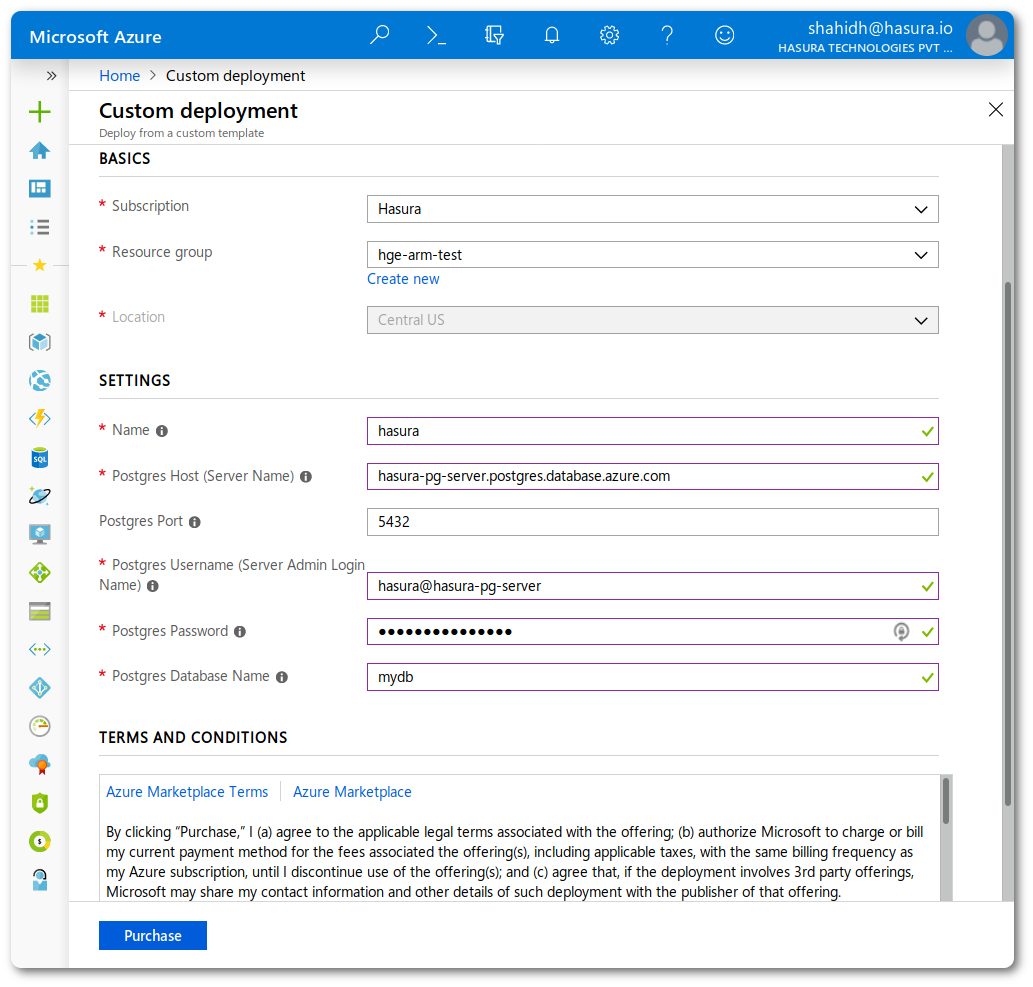
Once all entries are filled, agree to the terms and click the Purchase button.
The deployment will start now.
Click on the Notification Bell icon on the header bar and then click on Deployment in Progress link.
On this screen, you can see progress for various steps in the deployment.
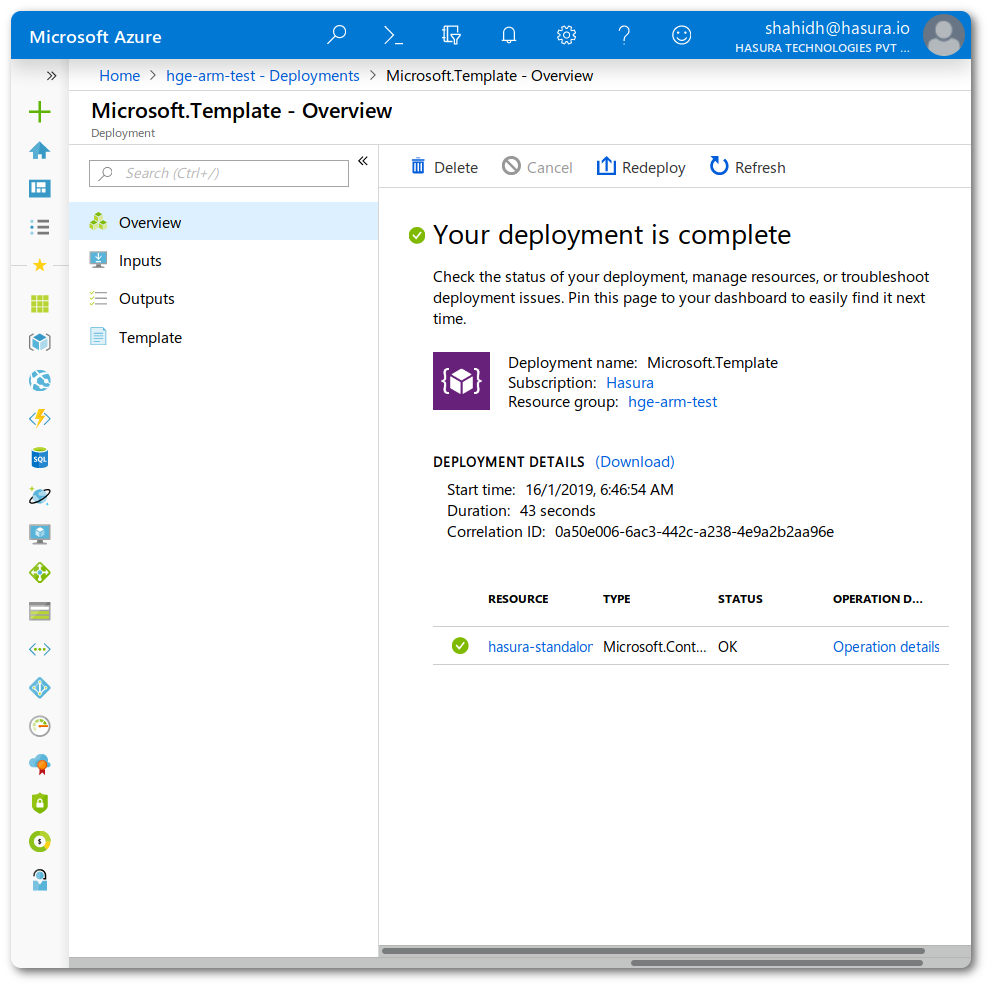
Once all steps are completed, click on the Outputs link on the sidebar.
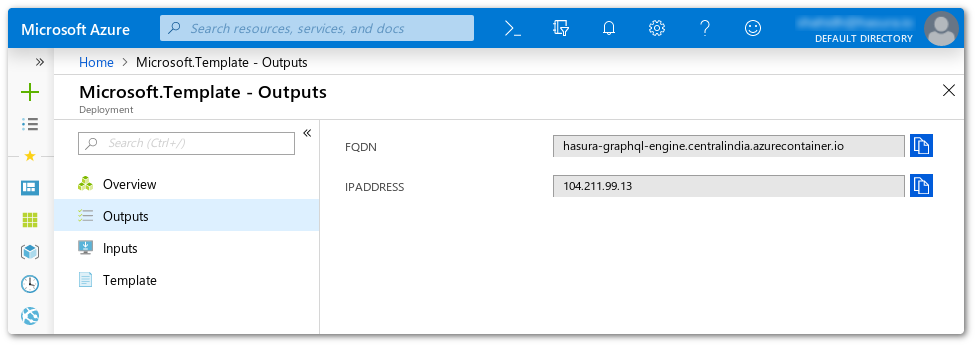
The FQDN and IP address are shown in this screen. Copy the FQDN and paste it into a browser. It will open up the Hasura GraphQL Engine console.
http://hasura-graphql-engine.centralindia.azurecontainer.io
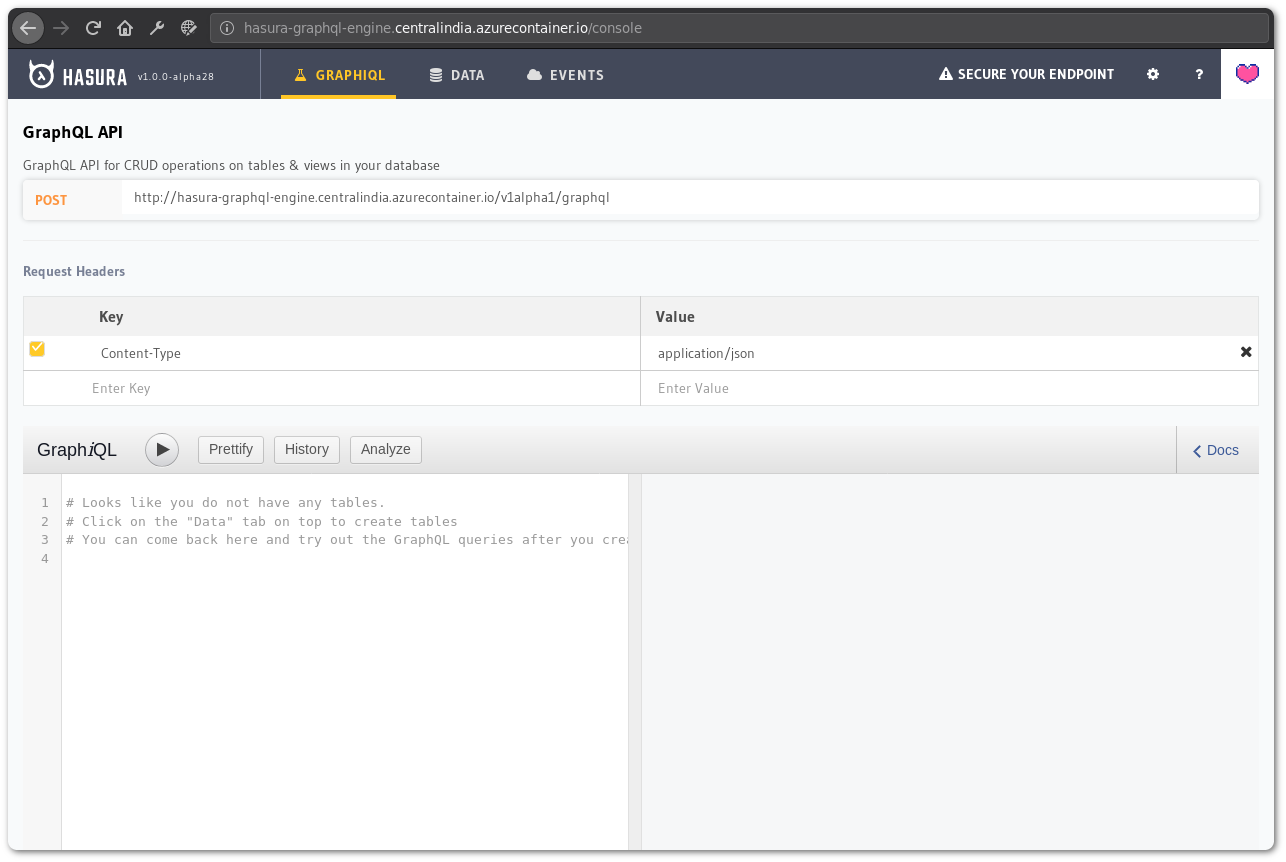
Track Tables
Once you open the console, switch to Data tab and you’ll be able to see the tables in the database. You might have to switch the schema (dropdown on the top of sidebar) if your tables are not in the default public schema.
